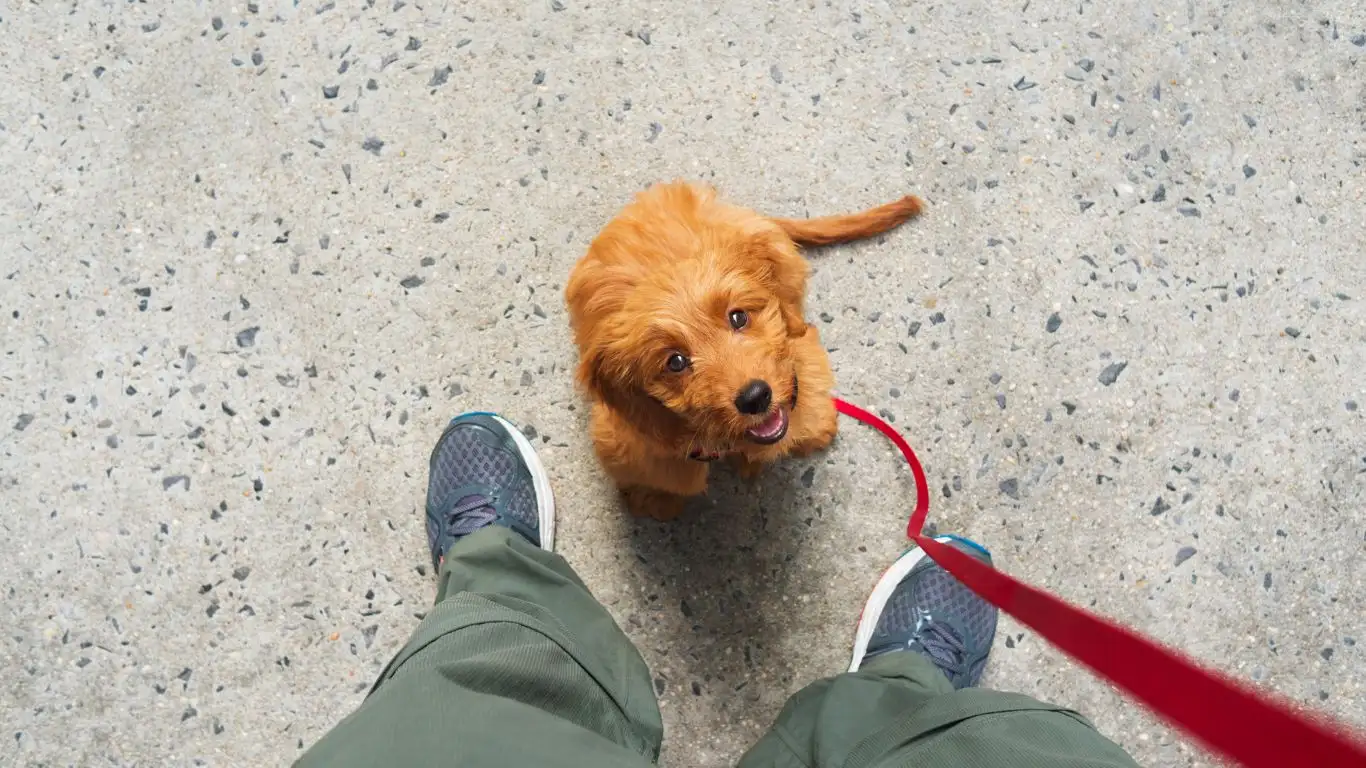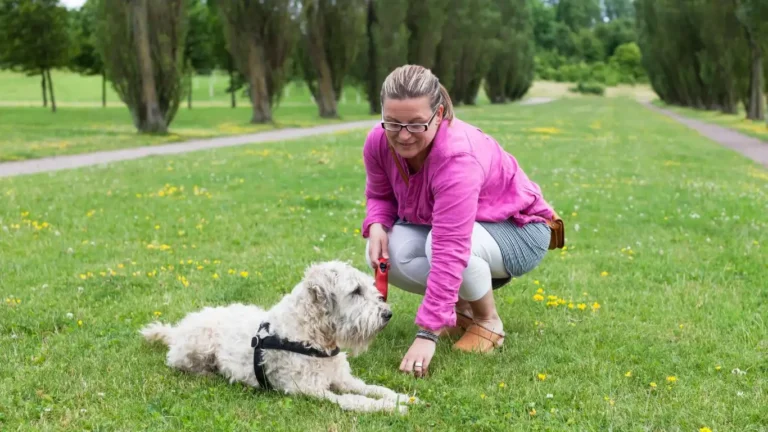Why Your Dog Misbehaves at Bedtime and How to Fix It Fast
Let’s talk bedtime battles — not with kids, but with dogs. If you’ve been wondering how to train a dog to behave during bedtime, you’re absolutely not alone. I’ve worked with dozens of pet parents as a Canine-Assisted Therapy Trainer, and bedtime behavior tops the list of questions I get. From restless pacing to late-night barking, it’s easy to feel like you’re never going to get a full night’s sleep again. The good news? You can absolutely teach your pup to settle down and snooze when you do. All it takes is consistency, empathy, and a few dog trainer secrets I’m excited to share.
Why Do Dogs Struggle with Bedtime Behavior?

First things first, we’ve got to understand why dogs act out at night. It’s usually not them being “bad”—more often, they’re anxious, under-exercised, or just haven’t learned the bedtime routine yet.
Common Causes of Nighttime Restlessness
- Lack of physical activity: If your dog’s been snoozing all day, they’re just not tired enough by bedtime.
- Separation anxiety: Some dogs get clingy or anxious when you’re out of sight, especially in the dark.
- Unclear expectations: Without structure, your dog doesn’t know what you want from them at bedtime.
- Environmental triggers: Noises outside, new smells, or even light changes can disturb your dog’s ability to settle.
I’ve seen dogs that seemed like absolute night owls turn into cozy bedtime companions once we addressed just one or two of these root causes.
Setting the Stage for Sleep Success

This part is crucial. Before you even start formal training, you’ve got to create a vibe that encourages calm. Think of it like winding down a toddler — no sugar rush right before bed, right?
Make Their Sleep Space Inviting
Whether it’s a crate, dog bed, or your own bed (if that’s your choice — no judgment here!), their sleep space should feel safe and comforting. I always recommend:
- Soft bedding that smells like you or their favorite blanket.
- Low lighting — think cozy, not blinding.
- Soothing background noise, like white noise or soft music, especially for pups sensitive to outside sounds.
One of my therapy dogs, a Golden Retriever named Luna, used to get spooked by the sound of cars outside the window. A little white noise machine changed everything for her — within a week, she was curled up like a cinnamon roll by 9 p.m.
Keep Pre-Bedtime Routines Consistent
Dogs thrive on structure. If bedtime looks and feels the same every night, they’ll catch on fast. A solid routine could include:
- An evening walk to burn off energy
- A little bit of low-key play or cuddle time
- One last potty break
- A consistent phrase like “Time for bed!” (say it the same way every time — tone matters!)
Consistency doesn’t mean rigidity, by the way. Some nights I’m in my PJs early, some nights I’m working late — but I always follow the same steps for bedtime with my dogs. They’ve come to expect it, and that predictability lowers their stress levels big time.
Training Your Dog to Settle at Night

Now we’re getting into the meat of it — how to train a dog to behave during bedtime. Here’s where all that prep work starts to pay off. The trick is teaching them that settling down brings rewards — attention, treats, comfort — and that getting up or fussing doesn’t.
Use Calm Commands and Positive Reinforcement
I always start with the command “settle.” I use it during the day, too — during car rides, on the couch, after a play session. Here’s how I train it:
- Get your dog into their bed or designated sleep area.
- Say “settle” in a low, calm voice.
- Wait for them to lie down — or even just pause and stay still — and immediately reward that behavior with a soft treat and quiet praise.
- Repeat this, gradually increasing the time they stay calm before rewarding.
It takes time, but believe me, it works. I once worked with a terrier who couldn’t stay still for more than five seconds. Within two weeks, she was tucking herself in when she heard “settle.”
Dealing with Setbacks and Sleep Regression

Even when everything’s going smoothly, don’t be surprised if your dog has the occasional rough night. Just like humans, dogs can experience setbacks — maybe there’s a thunderstorm, they’re not feeling well, or something about their routine shifted. That doesn’t mean your training isn’t working.
I remember working with a sweet old rescue named Jasper. He’d been doing great for weeks until a loud fireworks night totally unraveled his progress. He was pacing, whining, even pawing at the bedroom door. Did we start from scratch? Nope — we just revisited some calming strategies, reinforced what he already knew, and gave it time. Within a few days, he was back to snoozing like a champ.
How to Handle Sleep Disruptions
- Stay calm: If you jump into panic mode, your dog will feed off that energy.
- Don’t reward whining or pacing by offering too much attention. Redirect gently and wait for calm behavior before engaging.
- Re-establish the routine: Go back to basics if needed — evening walks, soft voice commands, settling cues.
- Rule out health issues: If disruptions are frequent or new, a vet check might be in order.
Setbacks are part of the process. Training isn’t a straight line — it’s more like a wiggly road with some pit stops.
Training Tips for Puppies vs. Adult Dogs

One thing I always emphasize is that how to train a dog to behave during bedtime varies a bit depending on age. Puppies and adult dogs need different approaches — they’re at different developmental stages and have different needs.
With Puppies
Training a puppy is like working with a baby — they’re learning everything for the first time. It takes patience, for sure, but the earlier you start, the better the long-term payoff.
- Limit nighttime access: A crate or playpen helps define the bedtime zone and keeps them safe.
- Late-night potty breaks are a must — their bladders are tiny!
- Keep bedtime calm: No rough play or high-energy activities right before settling down.
My own pup, Maple, used to whine a bit in her crate at first — totally normal. I’d sit nearby with a hand draped over the side, just so she knew I was close. Within a week, she was happily curling up as soon as the lights dimmed.
With Adult or Rescue Dogs
Older dogs, especially rescues, may come with habits — good or not-so-good. You’ll want to gently re-teach them your preferred bedtime behavior without overwhelming them.
- Start slow: Don’t expect instant success. Small wins matter.
- Use consistent language: Phrases like “go to bed” or “settle” should always sound the same.
- Reward the calm: Never underestimate the power of praise and a little treat when they’re lying down peacefully.
Rescues, especially, thrive on stability. I had one client with a senior beagle who’d only ever slept outside. Teaching him to rest inside at night took a few weeks, but he eventually began to love the warmth of his new bed.
Integrating Bedtime Training into Your Daily Routine

Training doesn’t stop at bedtime. One of the things I stress most in my work is that dogs learn from your everyday patterns. If calm behavior is encouraged consistently — not just at night — it’ll carry over into your dog’s nighttime routine.
Daily Habits That Reinforce Bedtime Training
- Daily structure: Meals, walks, and playtime at roughly the same times each day provide comfort and predictability.
- Encouraging calm behavior: Reward calm sitting, lying down, and chill vibes throughout the day — not just when you need quiet at night.
- Avoid over-stimulation: Especially in the evening hours, tone things down to cue your dog that bedtime’s approaching.
One trick I love? Use a calming scent like lavender in a diffuser near your dog’s bed — not overpowering, just a gentle signal that it’s time to wind down. It’s the doggy equivalent of your brain recognizing a warm cup of tea and soft pajamas.
The more your dog sees bedtime as a natural part of your shared rhythm, the less training you’ll have to do in the long run. It becomes part of their world — and yours.
Addressing Bedtime Behavior Challenges in Multi-Dog Homes

If you’ve got more than one dog, bedtime can feel a bit like running a kennel at closing time — everyone’s got different energy levels, routines, and quirks. I’ve worked with a number of multi-dog households, and how to train a dog to behave during bedtime becomes even more layered when you’re juggling two or three furry personalities.
Give Each Dog Their Own Space
Dogs are like us — sometimes they just need a little personal space to fully relax. It’s tempting to put all your dogs in one cozy spot, but this can lead to resource guarding, play-fighting, or general chaos when it’s time to wind down.
- Separate sleep zones help reduce overstimulation and territorial issues.
- Individual routines let you tailor calming techniques to each dog’s needs.
- Staggered bedtime cues can prevent group excitement when you say “settle.”
In one case, I worked with a family who had a high-energy Boxer and a senior Cocker Spaniel. The Boxer needed a good 30 minutes of fetch before she could settle, while the Spaniel was ready to snooze by 8 p.m. Once we set up separate wind-down routines and sleeping spots, both dogs started sleeping better — and so did their humans.
When to Seek Professional Help

There’s no shame in calling in reinforcements. If your dog’s bedtime behavior seems extreme — pacing for hours, barking relentlessly, or showing signs of distress — it may be time to work with a certified dog trainer or veterinary behaviorist.
Signs You May Need Extra Support
- Your dog is showing signs of nighttime anxiety or aggression.
- You’ve tried consistent training with no progress after several weeks.
- There are sudden changes in behavior with no clear cause.
- Your dog’s sleep issues are affecting your quality of life or theirs.
Professionals can help tailor a plan to your specific dog, environment, and lifestyle. Sometimes it’s a matter of tweaking your approach — other times, a deeper issue like separation anxiety or medical discomfort is in play. Either way, you don’t have to go it alone.
Helpful Tools and Products for Bedtime Training
Over the years, I’ve found a few trusty items that really support the bedtime training process. These aren’t magic fixes, but when paired with structure and patience, they can make a big difference.
Top Bedtime Helpers
- Calming chews or treats with ingredients like melatonin or chamomile (check with your vet first!)
- Weighted blankets or calming vests for anxious dogs
- Nightlights or white noise machines to reduce environmental stress
- Routine trackers like pet care apps to log walks, meals, and sleep patterns
I used to swear by a lavender-scented spray I’d lightly mist on dog beds — especially for dogs who struggled with change. It’s all about creating an environment that helps your pup feel grounded and safe, night after night.
Final Thoughts on Building a Bedtime Routine That Works
At the end of the day, how to train a dog to behave during bedtime comes down to a mix of consistency, empathy, and communication. Whether you’re working with a bouncing puppy or an older rescue finding their rhythm, your approach should always reflect patience and understanding.
As a trainer, I’ve seen dogs transform from nighttime whirlwinds into peaceful sleepers — not through force or frustration, but through gentle guidance and a clear structure they can rely on. Your dog wants to do well. They just need your help getting there.
So build that routine. Stick to it. Adjust when needed. Celebrate the small wins — even if it’s just an extra five minutes of calm before bed. Over time, those minutes will add up to peaceful, restful nights for both of you.
References
Disclaimer
This article is based on my personal experience as a Canine-Assisted Therapy Trainer and is intended for informational purposes only. Every dog is unique, and training results may vary. If your dog is exhibiting signs of extreme anxiety, aggression, or health issues, always consult a veterinarian or certified behaviorist for professional guidance.






